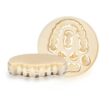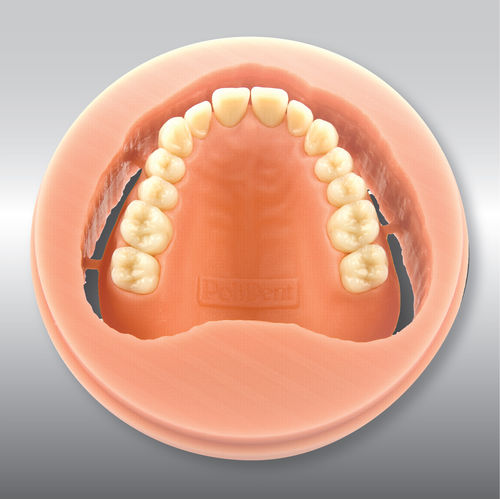There are several groups of individuals who, with more or less justification, consider themselves eye specialists. It is important to be able to distinguish among these and to understand the service which each is qualified to render.
The oculist or ophthalmologist is a graduate physician who first had a basic training and practical experience in general medicine and surgery and then specialized in diseases of the eye. He realizes that eyestrain or visual defects are frequently associated with and may be the first recognizable sign of disease, either in the eye itself or in some other part of the body, and he considers all such possibilities when making an eye examination. Furthermore, physicians are the only persons permitted to treat disease or to use the drugs which are so necessary for complete eye examinations of young persons. If, after a careful examination, glasses are deemed necessary, the oculist writes a prescription for them which are taken to an optician to be filled.
Opticians are craftsmen, skilled in the grinding of lenses and the making and fitting of glasses according to prescriptions. If eyestrain is to be relieved, lenses must be accurately ground and glasses carefully fitted. It is essential also that frames and nose pieces be kept in proper adjustment. In some cases of astigmatism even a slight displacement of a lens from its proper position will cause discomfort.
Optometrists are licensed to make visual tests and to prescribe glasses. They are not trained to treat diseases, but graduates of approved schools of optometry are trained to make proper references to physicians. Some optometrists do not limit themselves to the examination of eyes but engage in the selling of glasses or are associated with some store which does so.
Most of the glasses worn are prescribed and sold by optometrists. Many optometrists render valuable services as competent, conscientious, and ethical practitioner. Others are primarily businessmen engaged in the selling of glasses for profit. Fortunately the proportion of ethical optometrists has been increasing rapidly over the past 15 years. These are reputable practitioners and truly merit the title of professional men. Theirs are not the names one sees blatantly advertised.
A word of sound advice for anyone who has or who thinks he has eyestrain is to investigate thoroughly before consulting those who advertise “Eyes examined free.” Such establishments are business, not welfare institutions. They examine eyes free, but they make their profit by selling glasses. Hence those who may need glasses should be very careful with whom they consult.
Then there are the “eye specialists” who travel about proclaiming some “newly discovered method” for correcting defective vision without the use of glasses. They usually start with a free lecture but collect the money later. It is amazing how many credulous people pay these fakers for a course of lectures, a book of instructions, or some other equally worthless commodity. As soon as fees begin to dwindle, such specialists hear a call to spread the “gospel” elsewhere.
Illumination
Although poor lighting is an important factor in the development of fatigue and eyestrain, there is no satisfactory evidence; the advertising of electric light companies notwithstanding, that poor illumination is a cause of defective vision.
The essentials of good lighting are that the light be adequate, uniform, and steady and that glare and shadows be avoided. Under no circumstances should the source of light be in the line of vision. For reading and close work the whole room should be well lighted with additional light centered upon the work. A Well-lighted room is bright and cheerful; a poorly lighted one gloomy and depressing. Good lighting improves the spirits, increases efficiency and productivity, and decreases accidents.
The color of the walls and ceiling of a room has a distinct influence upon the amount of light necessary to give adequate illumination. Light colors reflect the light; dark colors absorb it. The illumination at any point in a room is received in part directly from the source of illumination and in part from light which is rejected from the walls and ceiling. The type of shade or reflector over a light makes a great difference in the illumination obtained from it. In fact, many of the most decorative shades render lights practically useless for illumination. In the selection of a lamp to be used for reading or close work the stamp of approval of the Illuminating Engineering Society (IES) gives assurance that the lamp is properly designed to give good illumination.
Glare
Bright light which strikes the eye directly from an un-shaded source or is reflected from objects such as glossy paper, polished furniture, clean white snow, or the hood of an automobile causes contraction of the iris with resultant unequal stimulation of the retina. This is commonly described as “glare” and is responsible for a considerable amount of unnecessary eyestrain.
Sunglasses of various sizes, shapes, and hues have become synonymous with sports and vacations from Florida to Alaska and from seashores to mountaintops. As a result they are worn much more extensively than any real need for them would justify. Our eyes possess the capacity to adjust themselves to varying degrees of light intensity. It is a mistake, therefore; to make a habit of wearing sunglasses whenever one is in bright light. On the other hand, there are situations in which the light is so brilliant or accompanied by so much glare that one is more comfortable if some of this light, particularly the ultraviolet light, is filtered out by special glasses. As a general rule, such glasses should not be worn indoors and should be put on out of doors only when the light is particularly bright. There are many kinds of sunglasses offered for sale and probably most of them are reasonably satisfactory. One should be certain, however, that such glasses do not contain irregular curvatures or Haws that will contribute to eyestrain. For persons whose eyes are particularly sensitive to light a little tinting of the glasses regularly worn may provide some comfort.
The Care of the Eyes and the Prevention of Eyestrain
Eyes will stand considerable abuse, but if one expects efficient service from them day after day and year after year, they must be given reasonable care. When used for close work, the eyes should be rested at frequent intervals by looking at a blank wall or at some distant object. During illness and convalescence they are susceptible to fatigue and so should be used sparingly. They need protection during infectious diseases, particularly measles.
Reading in bed frequently produces eyestrain because the book, magazine, or paper is not held in a proper position, and lighting is inadequate and poorly placed. Likewise, reading with an unsteady light or on a moving train is very fatiguing and likely to cause severe eye strain. Adequate, steady, and properly located illumination is essential for comfort in the use of the eyes.
Goggles are useful to protect the eyes from dust and wind and are the most important single measure for the prevention of eye injuries in numerous occupations. Tinted lenses reduce the irritation from the glare of the sun in summer and the reflected light from the snow in winter.
When symptoms of eyestrain or of defective vision occur, the eyes should be examined by a competent oculist. However, not everyone with symptoms of eyestrain needs glasses. It is important also to realize that the condition of the eye and the general health are closely related. Defective vision may be due to a specific disease or may be aggravated by poor general health, and eyestrain may give rise to symptoms in remote parts of the body. Finally, when the eye is involved, the best service is none too good, for the possibility of preventing progressive loss of vision and eventual blindness may depend upon the early recognition and proper treatment of glaucoma, trachoma, progressive myopia, or certain general diseases or toxic conditions.




